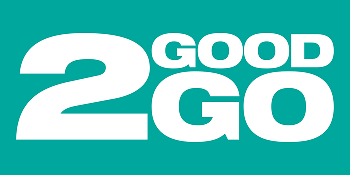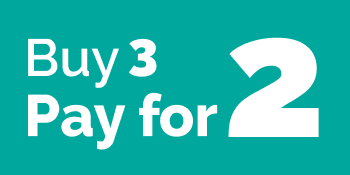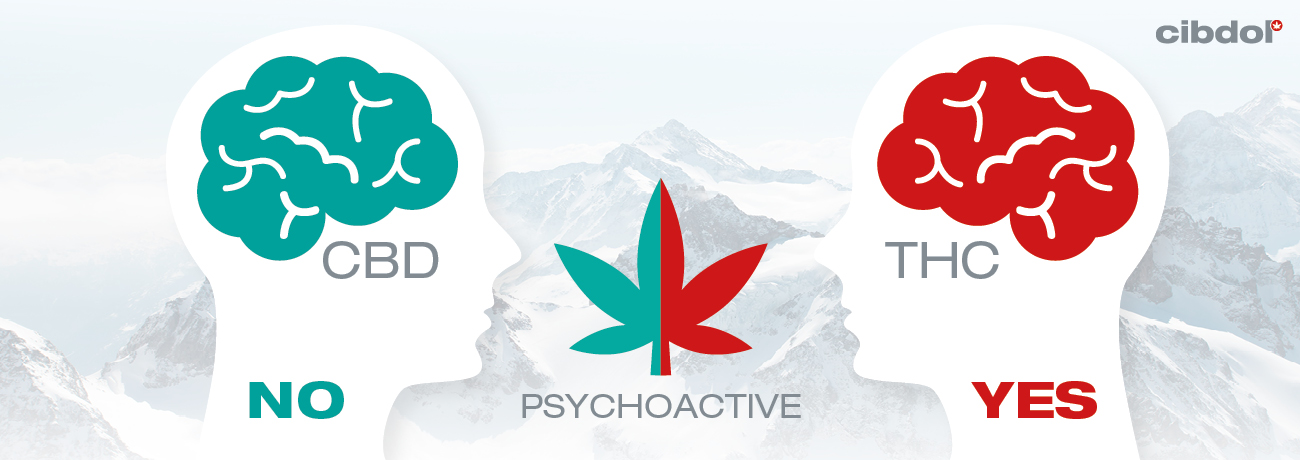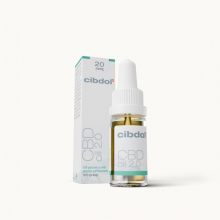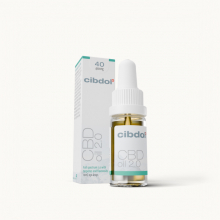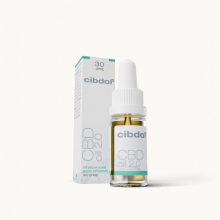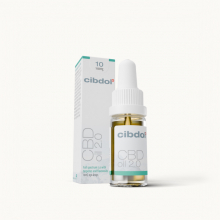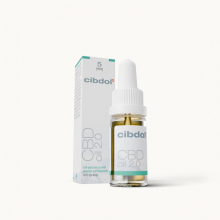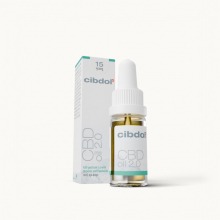What's the difference between CBD and THC?
Published:
-
Though CBD and THC are both major cannabinoids in cannabis, they each impact the body and mind in different ways. Knowing these differences and more is key to making responsible decisions about how we use CBD and THC.
-
Unlike CBD, THC is psychoactive and creates a “high.” Conversely, CBD is non-intoxicating and sought by consumers for its expected wellness effects without the high. Ultimately, it all comes down to your personal preferences and health goals to determine which is better for you.
-
CBD and THC legal status across the United States The legalities surrounding CBD and THC can be complex and confusing. We encourage consumers to consult both federal and state laws before buying or using any cannabis-derived products.
-
How you consume CBD or THC—whether by inhaling, eating, using tinctures, or applying topicals—can significantly influence the onset, duration, and intensity of their effects.
-
No matter which cannabinoid you choose, quality and transparency should always be your top priority when choosing cannabis products. Proper Regulation and Sourcing Find products with trusted sourcing and clear labeling, including third-party lab results for both safety and efficacy.
-
Monitor your individual responses and begin with small doses, particularly if you’re unfamiliar with CBD or THC. Use according to your circumstances and experience, and seek advice from qualified healthcare practitioners regarding use for therapeutic purposes.
CBD vs. THC
CBD and THC are the two most notable active compounds (cannabinoids) found in the cannabis plant, they act in drastically different manners. Cannabidiol, or CBD, is the other primary component found in cannabis that is NOT psychoactive, and as such, will NOT get you high.
THC, or delta-9-tetrahydrocannabinol, is the primary psychoactive compound responsible for the high associated with cannabis use. Legally in many countries. Most CBD products must have less than 0.3% THC. This makes it a great option for those looking for the benefits of CBD without the psychoactive effects typically associated with THC.
In everyday life, consumers reach for CBD to ease anxiety or discomfort. On the other hand, THC is the favorite of those who desire psychoactive effects. Understanding these 5 essential facts sets you up to make informed, healthy decisions when exploring the wellness market.
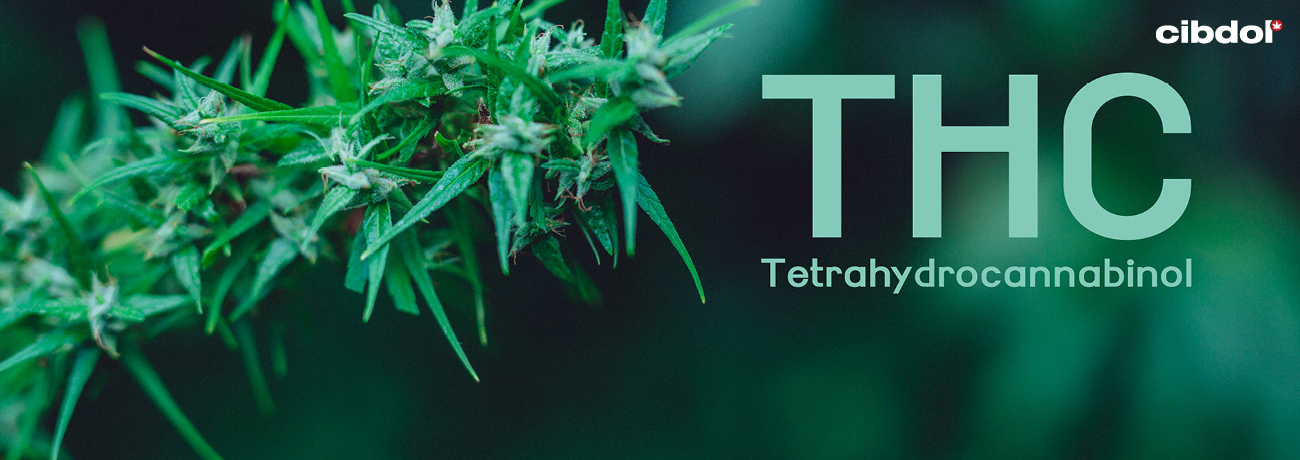
Cannabis 101: The Starting Point
Cannabis is a plant with rich history and scientific knowledge. It has two main species: Cannabis Indica and Cannabis Sativa. Both can synthesize THC, the active ingredient in marijuana that people commonly seek out for its intoxicating effects.
Hemp is only produced from Cannabis Sativa. Hemp plants are defined as having under 0.3% THC, while marijuana plants typically have higher levels. This key difference frames the way each plant is used and how laws perceive them. For anyone in Europe looking for safe, natural wellness, knowing these facts means making better choices about products and their effects.
What Are Cannabinoids?
Active ingredients Cannabinoids are the active ingredients produced naturally by the cannabis plant. So far over a hundred have been discovered, with CBD and THC taking the lead.
These two have the same basic chemical formula, but they behave radically differently. THC is the compound you’re most familiar with, the one people say gets you high. It is consumed in varieties such as flower, hash, and oil.
Unlike THC, CBD doesn’t have psychoactive effects and therefore won’t get you “high.” Both operate by connecting to the body’s endocannabinoid system, which regulates homeostasis and reaction.
Your Body's Endocannabinoid System
Your body’s endocannabinoid system The endocannabinoid system (ECS) is a complex network of receptors responsible for maintaining equilibrium in homeostatic processes. It works specifically on what are known as CB1 and CB2 receptors.
These locations allow various cannabinoids—including THC and CBD—to influence our pain, mood, and appetite. One of those receptors is CB1, which THC binds so tightly that it drastically alters mood and sense.
CBD does it a different way, so it’s sort of like tuning the system without the high.
Hemp vs. Marijuana: Key Distinctions
Hemp has a negligible amount of THC—less than 0.3%. Marijuana has a whole lot more. Laws in Europe and the US have used this cut-off to establish legal parameters.
Now hemp is being utilized for wellness, food and fiber. Marijuana is used more for the euphoric high effect of the plant or the medicinal value. How you consume cannabis makes a difference, too—when eating cannabis it can take about 30 minutes to kick in.
THC: The Well-Known Cannabinoid
As the most well-known and understood compound in cannabis, THC continues to drive recreational and medical use throughout Europe and the world. This unique structure makes it responsible for producing the “high” that many people associate with marijuana.
THC is available in a variety of different forms—flowers, hash, and hash oil. In Europe, regulations for THC vary considerably. For instance, the Netherlands permits regulated and licensed sales in coffeeshops, whereas other nations have limited use to medical environments. This legal patchwork presents users with considerable obstacles and difficult decisions.
THC's Action in Your Body
THC primarily binds with CB1 receptors in the brain. This bond affects mood, cognition, and sensory perception, resulting in a euphoric high.
Once inside the body, THC is converted to a different compound in the liver. It metabolizes into active forms that can linger in the bloodstream for many hours. How long and how strong these effects last largely depends on your method of consumption.
Smoking provides quick, short-term effects. With edibles, the onset is slow, but the effects last significantly longer.
Understanding THC's "High"
A THC “high” usually produces feelings of euphoria, relaxation, and altered perception of how things look and sound. For others, these effects are desirable for unwinding after a long day or enhancing creative pursuits.
How intense the high will feel in part depends on dose, but individual tolerance levels play a role. An occasional or new user might experience something very different than a frequent user.
THC: Potential Benefits
Doctors in some parts of Europe prescribe THC to reduce pain and increase appetite, particularly for patients with cancer or glaucoma. Synthetic analogues such as nabilone and dronabinol are used to alleviate chemotherapy-induced nausea and vomiting.
There are still ongoing studies into THC’s medical applications.
THC: Points to Consider
When using THC, side effects—such as anxiety or paranoia—may emerge. Frequent use can quickly result in tolerance or habit.
Greater risk arises without dosage control. THC remains in the body for several days or weeks, and drug tests can detect use long after the fact.
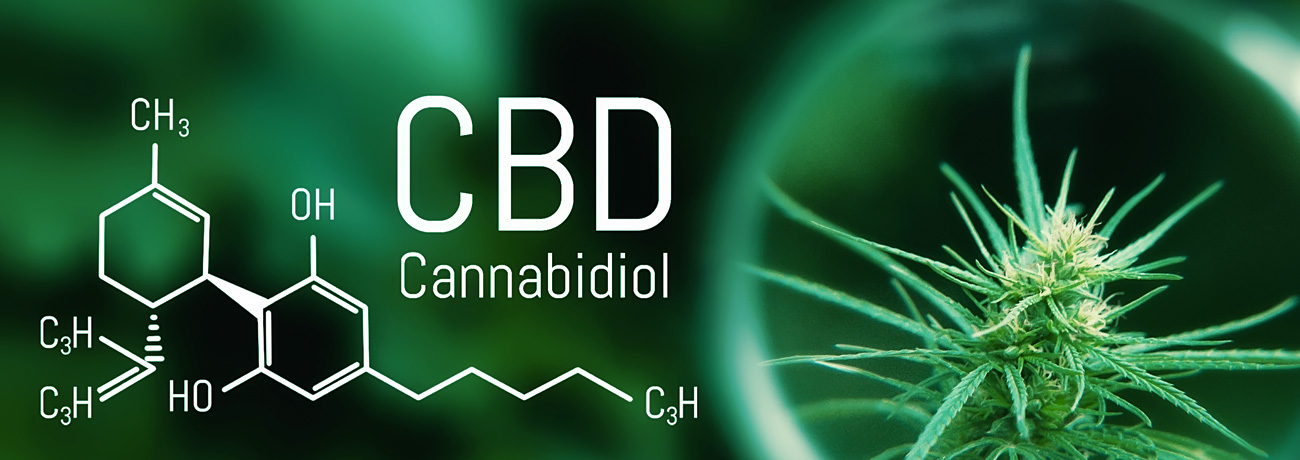
CBD: The Non-Psychoactive Cousin
CBD, or cannabidiol, is the most popular non-psychoactive cannabinoid derived from cannabis plants. Unlike THC, its more-famous cousin, CBD doesn’t get you stoned. This important distinction is what informs how consumers in Europe – and the rest of the world – are able to access CBD and its benefits.
The interest in products with CBD has spiked, particularly in the health and wellness communities. For these reasons, many turn to CBD for stress, sleep, or pain relief, looking for natural compounds without the high. In many European countries, CBD has a friendlier legal status compared to THC, putting it into a more accessible status for consumers.
CBD's Unique Body Interaction
Though CBD and THC have the same chemical make-up, their effects on the body are completely different. Unlike CBD, THC binds directly to CB1 receptors in the brain, producing psychoactive effects.
Unlike THC, CBD seems to have a much softer touch when interacting with CB1 and CB2 receptors. This unusual action makes it possible for CBD to oppose some of THC’s effects when used in combination. Since CBD is non-intoxicating, it attracts adult consumers who seek the beneficial effects associated with cannabis without the high.
Exploring CBD's Appeal
Consumers gravitate towards CBD for its reported ability to help calm anxiety, reduce inflammation, and relieve pain. Whether it’s Cibdol’s CBD oils, capsules, or gummies, these products just go to show how vast the European market has become.
The interest in plant-based solutions has certainly peaked as millions are looking for alternatives to expensive prescription drugs. Quality brands—ours included—are committed to natural purity and transparency, principles that resonate with European consumers.
CBD: Potential Benefits
Emerging studies show that CBD may help with anxiety, chronic pain, and even rare forms of epilepsy. Epidiolex is a well-known FDA-approved example.
Researchers are investigating its potential role in treating inflammation and other conditions as well.
CBD: Points to Consider
The science behind CBD is very much in its infancy. People often report drowsiness and/or nausea.
Read CBD: Quality Control CBD products are not all created equal, so quality and purity make a difference between safe and effective and dangerous and ineffective.
CBD vs. THC: The Main Differences
CBD and THC are the two most common cannabinoids concentrated in cannabis plants. Their effects, legal status, and uses differ significantly. Knowing these key differences allows users in countries throughout Europe, including the Netherlands, to choose products that best align with their needs and way of life.
We’ve laid out a quick table to highlight the key differences.
|
Feature |
CBD |
THC |
|---|---|---|
|
Psychoactivity |
Non-psychoactive |
Psychoactive (produces a high) |
|
Legal Status (EU) |
Legal (if from hemp, |
Mostly illegal, except for medical use |
|
Common Uses |
Anxiety, pain, epilepsy |
Pain, nausea, appetite stimulation |
|
Plant Source |
Hemp (low THC) |
Marijuana (high THC) |
|
Prevalence |
Widely available |
Controlled/subscription only |
1. Different Structures, Different Vibes
CBD and THC have the same atoms—21 carbon, 30 hydrogen, 2 oxygen—but they are arranged in different ways. These varying structures alter the way each one interacts with receptors in your body.
THC binds tightly to CB1 receptors in the brain, producing psychoactive effects that get users high. CBD doesn’t bind the same way, which is why it doesn’t get you high. Understanding this difference allows consumers to choose the product that best suits their needs.
2. The "High": THC vs. CBD
THC makes you high, CBD does not. Those seeking a more clear-headed relief tend to choose CBD. Many users are under the impression that CBD is a “high-less” alternative.
That’s erroneous—it doesn’t alter your mind state like THC.
3. Interacting with Your System
Unlike CBD, THC primarily acts on the brain’s CB1 receptors. CBD operates on a wider scale, affecting both brain and immune cells.
Occasionally, CBD may even counteract THC’s high. Reactions vary—some feel calm, others alert—so it’s smart to note personal responses.
4. Potential Health Uses Compared
In Europe, medical doctors frequently prescribe CBD to treat chronic pain, anxiety, or epilepsy when other treatments have failed. THC is often used to relieve pain, nausea, or a lack of appetite, but is subject to stricter regulations.
Some therapies employ both for larger therapeutic effects.
5. Comparing Potential Side Effects
|
Side Effect |
CBD |
THC |
|---|---|---|
|
Drowsiness |
Mild, rare |
Common, dose-dependent |
|
Anxiety |
Rare |
May increase |
|
Dry Mouth |
Sometimes |
Common |
|
Euphoria |
No |
Yes |
Comparing potential side effects is an important consideration for safety and comfort. It’s important to gauge how your body responds, since the quality of labels can vary widely.
6. Do They Work Better Together?
Emerging research and anecdotal evidence from long-time cannabis users indicate that CBD and THC are most effective when taken together. This phenomenon is often referred to as the “entourage effect.
While research into the perfect combination continues, numerous patients have reported positive effects from combined use.
CBD and THC: Navigating US Law
Though CBD and THC are both derived from cannabis, US law treats them quite differently. With multiple layers of rules at the federal and state level, the regulations can be confusing. Whether you’re Cibdol, or someone who uses plant-based wellness products, being aware of how these laws function is simply a wise thing to do.
Federal Law: The Baseline
Federal law: The baseline THC—legal to grow and sell in all 50 states. The Controlled Substances Act undeniably continues to classify THC as a Schedule I substance. This designation renders it illegal, save for the most exceptional cases.
CBD derived from hemp with no more than 0.3% THC is legal federally. Yet the FDA still retains regulatory authority over its use in foods and dietary supplements. Currently, only one cannabis product, Epidiolex for the treatment of epilepsy, has received complete FDA approval.
Since most CBD products do not require FDA approval before hitting the market, the quality can be extremely inconsistent. THC content is often higher than advertised—researchers found up to 70% of CBD products are incorrectly labeled. Moreover, drug tests can detect both THC and CBD days after consumption.
State Laws: A Mixed Bag
State laws: A mixed bag State laws have shifted the terrain. States that allow adults to legally use cannabis, both for medical and recreational purposes. Some take it a step further and prohibit any amount of THC or hemp-derived CBD.
Even the presence of trace THC in a legal CBD oil could still lead to legal consequences in those states. Just as important as federal law are local rules. As always, be sure to review the laws in your state prior to purchasing or consuming CBD or THC products.
Product Labels: What to Look For
-
Check for clear THC/CBD levels.
-
Find the source of the hemp or cannabis.
-
Look for proof of third-party lab testing.
-
Confirm serving size and dose details.
-
Watch for FDA or state warnings.
Third-party testing has verified these products are safe, effective, and true to label. Serving sizes and strengths may be different, so check each time. Cibdol has long been an advocate for transparency and safety.
How You Use Them Matters
How you use CBD and THC matters, and it affects how they operate in your body. How you use them—smoking, vaping, eating, or putting on your skin—determines how fast and how long you feel the high. This is important for folks here in Europe, where consumer preferences and regulatory caps can vary. Choosing the appropriate approach is critical to providing safety, comfort, and achieving desired outcomes.
Inhaling: Quick Effects
Whether you smoke or vape CBD or THC, you feel the effects quickly—typically in just minutes. This is particularly useful when you require immediate onset like in the case of pain or anxiety. Inhaling has the downside of shorter duration of effects, typically only a few hours.
For THC, this rapid onset creates a powerful high or euphoric feeling. For one, adolescents who use THC this way are at greater risk for development of mental health concerns and dependence. When people use cannabis responsibly, risks to lung health are minimized, and it ensures responsible, safe consumption, particularly among first-time or novice cannabis users.
Edibles: Longer Lasting
Edibles, like gummies or baked goods, have a delayed onset—sometimes as long as 30 minutes to two hours. When they finally kick in, the effects last significantly longer, potentially up to eight hours. Dosing is a fine line.
Too high a dose can lead to adverse side effects, too low a dose can be ineffective. Finally, a note about patience—wait before you eat more.
Tinctures: Balanced Approach
Tinctures, typically administered sublingually, combine rapid onset with a degree of titration. Effects usually begin within 15–45 minutes. Using them sublingually bypasses the gut, which makes for a much speedier experience.
Cibdol tinctures allow you to dose with precision—a boon for regular users seeking consistent, measurable results.
Topicals: Targeted Application
Topicals, creams, and balms have a thicker, waxier consistency that adhere to the skin and act only on areas of application. They are not responsible for producing a high. Both CBD and THC topicals can work wonders on sore or inflamed joints or muscles.
Selecting the proper formula is important since some formulas are designed to target pain while others calm and nourish skin.
Our Take: Making Smart Choices with Cibdol
With all this CBD and THC noise, it’s easy to try to figure out what you really need to know. At Cibdol, we believe clear facts and honest answers are the best way forward. Smart choices begin with accurate information and some personal reflection.
Here’s what we’re doing to help our European community make smart choices and focus on what matters most.
Cutting Through the Noise
Whether you’re looking for CBD oil or cannabis flower online, the internet is crowded with misleading claims. Sorting through blogs, forums and advertisements may seem like a daunting task. What we often encounter are statements which overpromise or fail to provide any evidence at all.
When it comes to interpreting scientific data, it pays to ask who’s providing the information and why. The most reliable studies have indicated that CBD is effective in relieving pain, stress and insomnia. Unfortunately, not every product is able to deliver what it promises.
At Cibdol, we pride ourselves on looking to peer-reviewed science and trusted sources so that our customers receive the most accurate, timely information possible without the hype.
Why Quality Is Key for Us
Quality really is the name of the game. With poorly made products, there’s a risk of mislabeling—some research has found as much as 70% of CBD products contain more THC than advertised. That would have downstream adverse impacts.
CBD needs to be isolated, with only trace amounts of THC (below 0.3%) to avoid the psychoactive effects that THC delivers. We test each batch in the same way, by Swiss-made lab tests and strict controls.
Consumers can feel confident that they’re getting safe, effective CBD that’s exactly what it says on the label. This fosters trust and encourages positive health outcomes.
Trusting Your Own Experience
Each person’s needs are different. Many report feeling more at ease and sleeping more soundly with the addition of CBD, while others experience a reduction in pain and discomfort.
As with any product, we highly recommend keeping a close eye on how each product makes you feel. Leaving thorough, candid reviews not only supports the business you’re reviewing, but educates other potential customers.
With more experience, you’ll be able to hone in on what works best for your body and lifestyle.
Conclusion
CBD vs. THC Both of these compounds originate from the plant Cannabis sativa. How they work in your body could not be more different. While CBD doesn’t get you high, people say they use it to feel more calm or less pain. THC is what gets you high, and many states have outlawed it. How you use them both matters—oil, gummies or vapes all hit your body at different speeds. In the US, state law determines the extent to which you can — and what exactly you can purchase. At Cibdol, we prefer our CBD pure and simple—leaving you confident knowing exactly what you’re getting. Looking for a smart, simple way to feel your best every day? Browse our selection and find out how CBD can work for you. Please get in touch with any questions—our team is always happy to assist.
Frequently Asked Questions
What is the main difference between CBD and THC?
CBD is non-intoxicating so it doesn’t produce a “high,” as THC does. Both CBD and THC are cannabinoids derived from cannabis, however THC is the psychoactive component. CBD has exploded in popularity largely because people enjoy its calming effects while remaining completely non-intoxicated.
Will I fail a drug test if I use CBD?
Pure CBD is unlikely to show up on a drug test. In reality, many of these products have small amounts of THC in them, enough that they can cause a positive test. Just be sure to purchase from reputable brands.
Can THC be used for medical purposes?
Can THC be used for medical purposes. Medical marijuana programs are different in every state, so consult with your physician and research local regulations.
Does CBD have side effects?
CBD is considered to have a good safety profile, although some individuals report mild side effects, including dry mouth, fatigue, or appetite changes. The best approach is to start with a low dose and talk with your healthcare provider if you notice anything out of the ordinary.
Are CBD and THC both found in hemp?
While hemp naturally has high levels of CBD, it has almost no THC (0.3% or less). Marijuana, a different sub-type of cannabis, contains higher levels of THC. Be sure to read the labels of products to see what is actually in them.
How should I choose between CBD and THC?
How should I decide between CBD and THC? Pick THC if you want more robust effects and you reside in a state where it’s legal. If you’re ever unsure, seek guidance from a medical provider.







